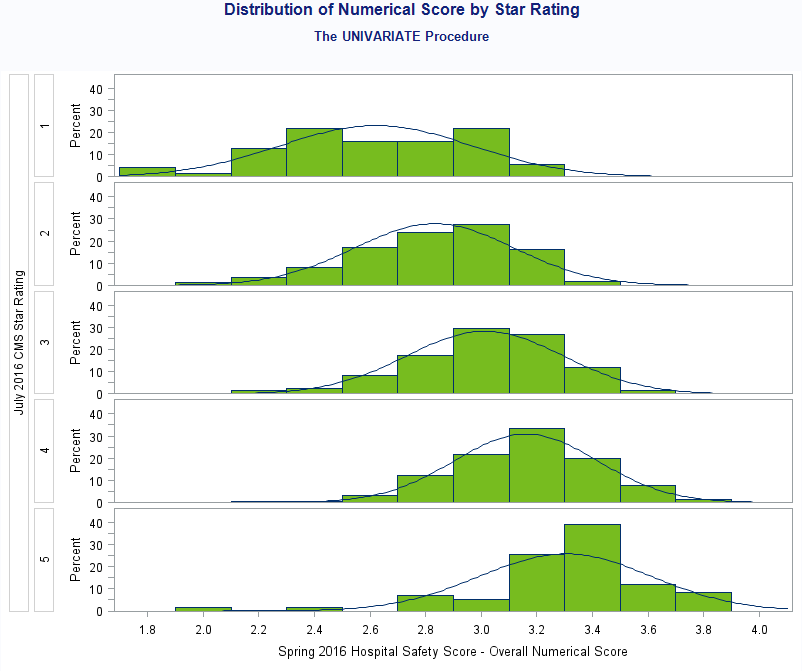The Leapfrog Group, the nation’s leading nonprofit advocate of health care transparency, stands firmly behind the Centers for Medicare & Medicaid Services (CMS) for yesterday’s release of consumer-friendly 5-star hospital quality ratings of American hospitals. By distilling over 60 tested measures of quality and safety into a rating consumers can conveniently use, CMS takes a giant step forward in the movement for health care transparency.
Do consumers really need these ratings?
Avoidable errors and accidents in hospitals kill more than 500 people a day, making it the third-leading cause of death in the U.S. Consumers deserve as much information as possible to protect themselves and their families, and tools to find the best possible care.
With this bold move, CMS came down on the side of patients and their families, helping make health care data more meaningful and actionable. Health care data should never again be locked away in an ivory tower accessible only by providers or policymakers. Which hospital you choose can mean the difference between a quick recovery or a dangerous hospital-acquired infection; between feeling respected and cared for, or ignored and distrusted. By putting meaningful metrics into the hands of consumers, we allow them to make informed decisions, and every American deserves that opportunity.
Some providers disagree with these ratings: Does that discredit the ratings?
Measuring quality and safety is a complex enterprise, and well-meaning people will always disagree about methodology or the value judgements inherent in weighing one aspect of performance over another. Consumers consult ratings and reviews for every other industry, from automobiles to appliances to books. Consumers understand that no one rating is perfectly fair to every competitor every time, but we value having thoughtful and well-researched perspectives that help us make important life decisions. The CMS measures and methodology have been subjected to exhaustive testing and review by top experts, far more comprehensive than most ratings in other industries.
Is it really fair to compare hospitals that serve different patient populations?
CMS went to extraordinary lengths to assure scientific rigor and appropriate risk adjustment. From the perspective of Leapfrog constituents—employers and other purchasers of health benefits, as well as consumers—we are persuaded by the extensive level of testing that CMS has provided us. It is a fair and reliable comparative assessment of hospitals, and consumers are wise to consider it.
What if CMS’ ratings disagree with hospital ratings from others, including Leapfrog?
CMS’ extraordinary 5-star rating is a major asset to consumers. Other hospital ratings are helpful as well, and Leapfrog offers links to many of the most reliable.
We also offer our own hospital ratings, including the Hospital Safety Score, a letter grade rating hospitals on how safe they are for patients. Our letter grades look exclusively at errors and infections in hospitals, whereas CMS considers over 30 additional measures of other performance issues not considered in our grade. As a result, many individual hospitals may have better or worse ratings from CMS than from Leapfrog. Nonetheless, even given the major differences in our methods, we still find strong general correlation between the Leapfrog grade and the CMS star ratings (see Figure 1 below).
Leapfrog is proud to support CMS in its release of hospital quality star ratings, and commends the agency as well as all others who are fighting to increase the transparency of America’s health care system.
Leah Binder, MA, MGA
President and CEO
The Leapfrog Group
FIGURE 1: Distribution of the Spring 2016 Hospital Safety Score overall Numerical Safety Score by CMS Hospital Compare Star Rating, with a fitted normal distribution.
The Numerical Safety Score determines the Hospital Safety Score letter grade, where a Numerical Score above 3.164 is considered an “A”, a score of 2.972-3.164 is a “B”, 2.493-2.972 is a “C”, 2.014-2.493 is a “D”, and below 2.014 is an “F”. The mean Numerical Score appears to increase with the Star Rating, meaning that those with a high Star Rating tend to also have better Numerical Safety Scores.
The Spring 2016 Hospital Safety Score overall Numerical Score and the July 2016 CMS Star Rating had a Spearman Correlation Coefficient of 0.45328, with a 95% confidence interval of (0.421925, 0.483415). This indicates a moderate positive correlation between the Numerical Safety Score and Star Rating.
Trademark of The Leapfrog Group - 2016. Cannot be distributed or reproduced without express permission of The Leapfrog Group.

